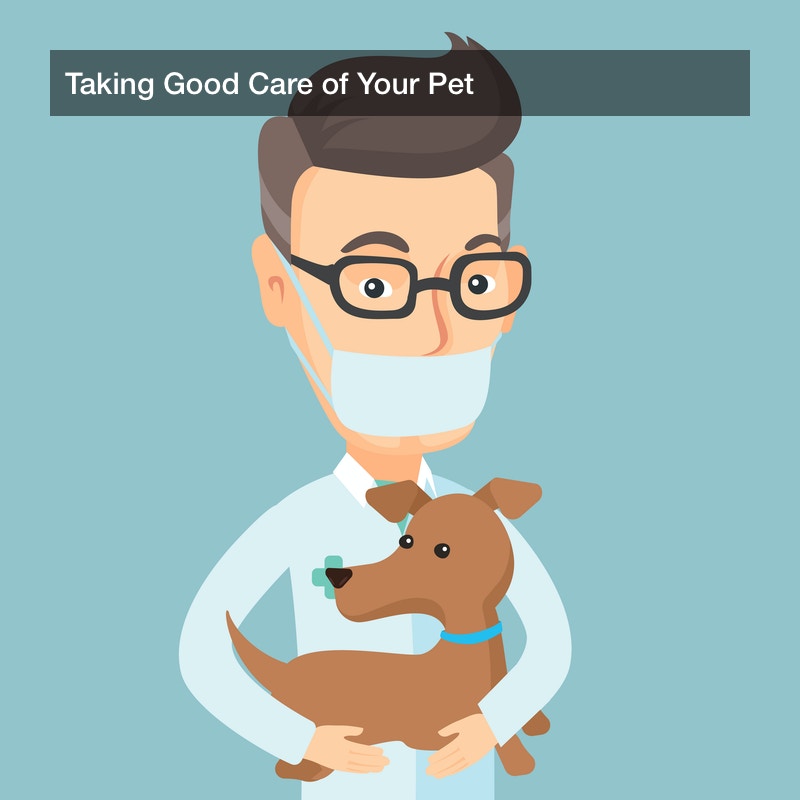Taking Good Care of Your Pet

Most American households own at least one or more pets, with the most common ones being cats, dogs, birds, and fish. Nearly 39 million American households own a cat, and nearly as many own a dog as well. And it’s not just them; other pets may range from lizards and snakes to rabbits, hamsters, and even tarantulas. No matter the species (or number of legs), a pet should be taken care of, and that means taking it to animal medical centers such as animal vets’ offices or even animal hospitals in case of emergency. An injured pet should be taken to 24 hour animal hospitals right away, though most medical cases may be much more minor. For example, lipoma in dogs is a fairly common issue, but lipoma in dogs rates are not something to be concerned about most of the time. As with human beings, a lipoma in dogs is a fatty, benign tumor that may appear as a lump under the skin. Still, pet owners may want to get cases of lipoma in dogs looked at with a vet’s help.
Visiting the Animal Clinic
It is routine for a pet owner to take their animal to a pet clinic for regular checkups for their pet’s health. This is most often done for cats and dogs, but it may also be done for other species such as birds, snakes, and others. In a clinic, guests may wait in the lobby with their animal, and allow vets to take it to an exam room one by one. These exams may look over the teeth and gums, tongue, eyes, ears, nose, skin, and fur of a cat or dog to check for any issues. A problem that is diagnosed early may be more easily treated, after all. While at the vet’s office, a vet may advise the owner on lifestyle changes or medication for their pet, such as vaccines against disease or other medicines.
Pets may suffer from ticks, fleas, ear mites, or even internal parasitic worms, which may be very uncomfortable for the pet and endanger their health. Fortunately, many medicines can kill off and drive away such pests, such as ingested pills or liquid medicines that are applied to its back. Fleas and ticks may be killed and discouraged from attacking the pet again, and internal worms may be killed with medicine.
A vet may advise a pet owner to adjust the pet’s exercise levels or diet, since dogs and cats may get overweight or obese like people. Obesity strains a pet’s joints and may cause heart issues or diabetes, so a pet owner may give their animal more exercise and alter the type and amount of food that it is given.
When visiting a clinic, a pet owner will probably keep their pet in a kennel or cage of some sort, especially for birds or reptiles, and often cats too. Calm and agreeable dogs may be brought on a leash, but if a pet is frightened or aggressive around strange people and other pets, the owner may have to keep it in the car (responsibly) until it is that pet’s turn to be examined.
Pet Care at Home
A pet owner can also take some steps at home to prevent harm to their pet. If they notice odd behavior such as yowling or whining in their dog or cat, or if the pet scratches or licks itself excessively, that may be a sign of distress, such as from fleas or ticks or mites. Outdoor pets should be monitored, and during summer or winter, a pet’s outdoor time should be limited. A pet brought back in from the heat should be given cool water to drink, and a pet coming in from the cold may get toweled off to remove wet snow and water. Dogs may even wear specialized sweaters to protect them from the cold. And if a pet is left outside in warm and sunny weather, there should be a shelter or at least some shade available, such as a dog house. Water should be provided in the shade, too. Finally, any hazardous plants or foods should be kept out of the pet’s reach, and owners may look up which foods and plants are unsafe for their pet.
